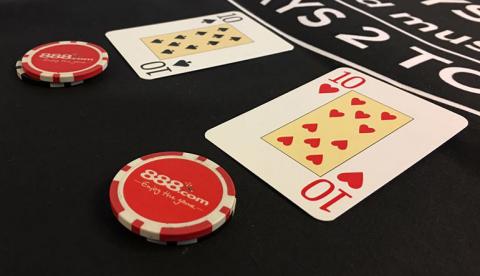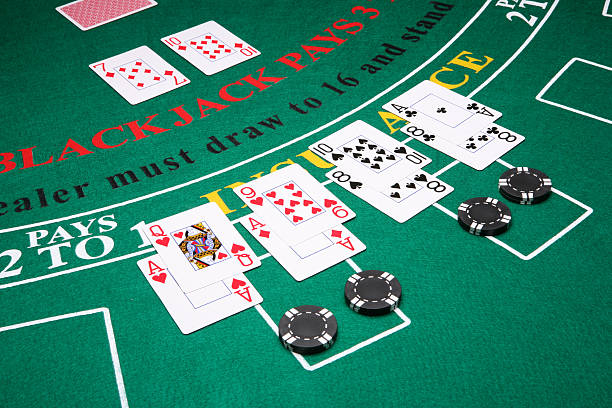When Can You Split In Blackjack
- When Do You Split In Blackjack
- When Can You Split In Blackjack
- When Can You Split And Double In Blackjack
- When Can You Split In Blackjack
- When Do You Split 8's In Blackjack
- Blackjack Splitting Strategy
All standard blackjack games do not allow hitting split aces. This is due to the fact that it would drop the house edge by.19%. Most blackjack games have a house edge of.5% or lower. The house must have an edge that covers its overhead. Additionally, can you get blackjack on a split? Splitting aces gives a player two chances to hit 21. In most casinos the player is only allowed to draw one card on each split ace. As a general rule, a ten on a split ace (or vice versa) is not considered a natural blackjack and does not get any bonus. Prohibiting resplitting and redoubling is. Always split When you have ACES: ACES are rare in blackjack, but with so many pair of 10-value cards in the deck, it’s easier to get 21 when you have an ACE. Splitting ACES is one of the best cards you can play in blackjack. You should also re-split your ACES. When can you split in blackjack? Check the explanation in the form of a blackjack split chart below. There are some best hands to split in blackjack. Looking at the table, consider that ace and 10 are the strongest cards or combinations, and 4, 5, and 6 are the weakest. This statement is based on complex mathematical calculations and should be.
US Players and Credit Card, BitCoin Deposits Accepted!
How to Play a Pair of 7's in Blackjack
Soft hands:Soft 13 - 14 - Soft 15 - 16 - Soft 17 - Soft 18 - Soft 19 to 21
Splitting pairs:Aces - 2's - 3's - 4's - 5's - 6's - 7's - 8's - 9's - 10's
Should You Split Seven's?
A pair of sevens should be split if the dealer is showing a 2 through 7.
If the dealer has an 8 or better, take a hit.
Reasoning
Assuming the dealer has a 10 in the hole, and she's showing a 2 through 7, then the dealer might have a total of 12 through 17. All of those hands except the 17 are stiff hands and are likely to bust.
If you split the 7's and assume you catch a ten, you'll have a total of 17. Not only will that beat all those totals except the 17, the dealer has a good chance of busting.
On the other hand, if the dealer has an 18 or better, you're pretty much going to lose most of the time, so there is no point in putting more money in the house's pocket. Just take the hit and hope you get lucky.
US Players and Credit Card, BitCoin Deposits Accepted!
Even players with little or no knowledge of basic strategy in blackjack understand one thing:
You always split aces and 8s in blackjack.
Of course, you can always find contrarians who disagree with everything, no matter how solid the math behind it is. This post is for people who want to understand in detail why you should always split aces and 8s in blackjack.
A Pair of Aces in Blackjack Is a Soft Total of 12
I don’t know a single blackjack player who gets excited about having a hard or soft total of 12. It’s a hand that’s going to bust a lot of the time when you hit it, because there are at least 16 cards worth 10 points in the deck. (That’s almost 1/3 of the cards in the deck.)
On the other hand, if the 1st card of a hand is worth 11 points, you stand a good chance (1/3 again) of winding up with a total of 21. Even if the game doesn’t pay off at 3 to 2 for blackjack after splitting, that’s still an excellent hand that the dealer probably won’t beat. The best the dealer can do is push.
The thing about splitting, though, is that you must put up another bet. Low rollers who are under-bankrolled sometimes don’t like this. They don’t WANT to risk additional money on a single hand, even if that hand becomes 2 new hands.
They’re making a mistake, and a big one. Not splitting aces does serious damage to the house edge for the game.
In fact, the house is so convinced of how strong a play this is that they have strict rules about what you can do after splitting. For example, you’re not allowed to take more than one additional card after splitting aces. And no one understands the math behind these casino games than the casinos themselves, trust me.
Casinos also usually restrict you from doubling down after splitting. You usually can’t resplit aces if you get another ace again, either.
When Do You Split In Blackjack

None of those minor rules variations, matter, though. It’s still always the correct strategy to split a pair of aces at the blackjack table.
A Pair of 8s in Blackjack Is a Hard Total of 16
If you think blackjack players are unenthusiastic about a total of 12, watch them shift uncomfortably in their chairs when they have a hard total of 16. There’s no good way to play a hard total of 16. If you stand, the dealer will probably beat you with a higher total. If you hit, you’ll probably bust.
But when you have a pair of 8s, you get to start 2 new hands, both of which have an 8 as their starting hand. 1/3 of the time, you’ll get a 10, which will make your new total a hard 18, which is a respectable hand for any blackjack player in almost any situation.
Also, even if you don’t get a 10, you might get an ace, which gives you a total of 19—which is, of course, even better than a total of 18.
Even if you get a 9, your hand improves to a 17, which is respectable, if not ideal.

Most casinos don’t have the same restrictions that apply to your “after-splitting” hands, too.
When Do You Deviate from Basic Strategy When It Comes to Splitting Aces and 8s
If you’re not counting cards, you NEVER deviate from basic strategy when it comes to splitting aces and 8s. Most of the time, even if you ARE counting cards, you still always split aces and 8s.
But there are exceptions if you’re counting cards.
If your count is negative and the dealer has an 8, 9, or 10 showing, you just hit the aces instead of splitting them.
Why is this?
When the count is negative, it means that there aren’t as many 10s left in the deck. Part of what gives splitting aces its kick is the possibility of getting that total of 21.
You run the risk of turning a single likely loser into 2 likely losers with twice as much money in action.
If the count is positive, you will sometimes not split a pair of 9s. If the dealer has a 9 or 10 showing in this situation, he’s more likely to have a 10 in the hole. (That’s what the positive count means, after all.) This means you’re probably facing a 19 or 20.
When Can You Split In Blackjack
When you split those 8s, yes, you’ll probably get a couple of hands that total 18.
But that does you little good against a 19 or 20.
When Can You Split And Double In Blackjack
And remember—those are only correct decisions if you’re counting cards and know what you’re doing.
An Argument against Splitting Aces in Certain Situations
Suppose the dealer is showing a 10, and you have 2 aces.
When Can You Split In Blackjack
Most people assume that the dealer’s down card is also a 10, so you’re probably facing a dealer total of 20.
If you split those aces, the only way to win both those hands is by getting a 10 in each of them. The probability of that is less than 1/3 for each, or about 1/9 for both of them.
What this argument misses is that a soft total of 12 is no fun to play in that situation, either. Sure, you don’t have to invest extra money to get those extra cards, but the trade-off just plain isn’t worth it.
Conclusion
When it comes to blackjack, you should always follow basic strategy—except when you shouldn’t.
Of course, the only time you shouldn’t is when you’re counting cards. In rare cases when you’re counting, you’ll deviate from basic strategy.
And one of the 1st rules of basic strategy is that you ALWAYS split aces and 8s.
When Do You Split 8's In Blackjack
That’s an easy one to remember.